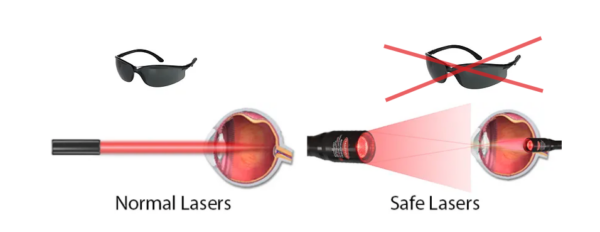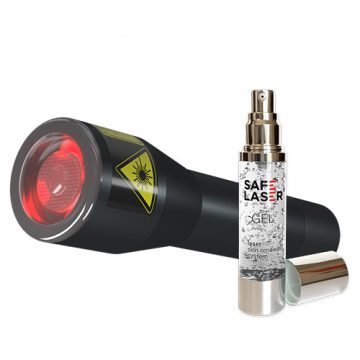Handy Ideas On Deciding On Safe Laser Therapy
Wiki Article
What Can Low-Level Laser Therapy (Lllt) That Is Safe (Lllt), Also Known As Low-Level Laser Therapy Aid In Treating Ulcerative Boils?
Safe Laser low-level laser therapy (LLLT), through its stimulation of tissue repair, aids in healing of wounds caused by ulcers. LLLT accelerates tissue regeneration and repair by stimulating cellular metabolism. It stimulates fibroblast, collagen and angiogenesis process (formation of blood vessels) which are all important in healing of wounds. This could help speed the healing of ulcerative lesions.
Reduced Inflammation LLLT reduces inflammation through blocking pro-inflammatory cytokines and also by promoting anti-inflammatory mediators. In wounds that are ulcerative in which inflammation may impede healing and cause the damage to tissues, LLLT can help reduce inflammation and help create a favorable environment for healing.
Pain relief LLLT alters the perception of pain by affecting the nerve conduction. This reduces the release of pain-related mediators, such as substance P. In cases of ulcerative injuries which are often connected with discomfort and pain, LLLT may help relieve pain and improve overall satisfaction.
Improved Blood Circulation LLLT enhances microcirculation and vasodilation, leading to an increase in blood flow to the wound location. Increased circulation brings oxygen and nutrients into the tissues. This helps heal and facilitates the removal of waste and toxins.
Antimicrobial Effects- LLLT has been found to have antimicrobial properties, which can help reduce the risk of infection ulcerative wounds. LLLT lowers the risk of infection, and also speeds up healing through encouraging the removal of bacterial and preventing colonization at the wound.
LLLT aids in reducing the appearance of ulcerative wound scars. It does this by promoting tissue regeneration and remodeling. LLLT, by stimulating the collagen fibers' production and encouraging the alignment of collagen bundles, could produce stronger, more arranged scar tissue.
Overall, safe Laser low-level laser therapy offers an effective and non-invasive approach for treating ulcerative wounds, promoting speedier healing, less pain, and improved overall outcomes for wounds. See a doctor prior to utilizing LLLT on ulcerative lesions. Follow the top safe laser 1800 for website recommendations including lézer kezelés hatása, lezer kezeles, orr lézer készülék, safe laser bérlés, lágylézer ár, otthoni lézer kezelés, lágylézer hatása, laser lézer, lágylézer ár, orvosi lézer készülékek and more.

What Is The Most Safe Low-Level Laser Treatment (Lllt) For Throat Problems?
Low-level laser therapy (LLLT) is safe and secure. (LLLT) can help with various throat problems through several methods: Reduction of InflammationThe LLLT treatment LLLT has anti-inflammatory properties, which can help reduce inflammation of the tissues in the throat. LLLT can reduce inflammation and the associated symptoms like swelling, pain or trouble swallowing for example, pharyngitis.
LLLT is effective in relieving soreness, discomfort and pain due to throat-related ailments.
Improved tissue healing- LLLT enhances the cellular metabolism which leads to accelerated repair and regeneration. LLLT aids in quicker healing of conditions such as throat ulcers. This reduces the risk of complications, as well as improving overall throat wellness.
LLLT improves blood circulation LLLT increases microcirculation through vasodilation. This increases the flow of blood to tissues in the throat. Improved Blood Circulation - LLLT can improve blood circulation and deliver oxygen to inflamed or damaged tissues. This promotes healing, reduces inflammation and aids in healing.
LLLT helps reduce swelling of the tissues of the throat by encouraging lymphatic drainage and reducing the accumulation of liquid. This can be beneficial to patients suffering from ailments such as post-operative swelling of the throat or laryngitis.
Treatment of Voice Disorders- LLLT could help improve vocal quality and ease symptoms of voice disorders, such as hoarseness and vocal fatigue. By reducing inflammation, and promoting the repair of tissues, LLLT helps restore vocal function.
It is safe Laser low level laser therapy can be a non-drug, non-invasive way to manage different throat ailments. It may provide relief from symptoms like inflammation, pain and difficulty swallowing. Before taking LLLT to treat throat issues you must seek out a medical professional to get a correct diagnosis and treatment. Read the top safe laser 150 for website recommendations including lágylézer árak, lágylézer kezelés árak, lágylézer készülék bérlés, lézer kezelés hatása, lézer bérlés, safe laser kezelés budapest, lágy lézer, lágylézer vásárlás, lezeres kezeles, laser hu and more.

How Long Will It Take For The Effects Of A Laser On Dental And Oral Conditions To Take Place?
Safe Laser's low-level laser treatment (LLLT) can produce varying outcomes based on the dental or oral situation. This is due to the nature of the kind of problem being treated and the severity. It also depends on the response of an patient. LLLT treatment sessions typically occur over a predetermined time frame to provide optimal results.
Type and severity of conditionThe amount of LLLT treatments required can be determined by the type and severity of dental or oral conditions being treated. According to the type of condition, LLLT may be required in various ways.
Individual Responses to Treatment Personal factors such as overall oral and dental health as well as immune function, healing capacity and other variables can affect how a person responds to LLLT. Certain people may react more quickly to treatment and experience quicker improvement in symptoms however, others might require long-term treatment.
Treatment Protocol - The treatment method recommended by a dental practitioner could have a significant influence on the number of LLLT sessions are required for oral and dental conditions. Healthcare professionals will customize treatment plans based on the individual's requirements. This may include scheduling LLLT several times per day or multiple sessions per week.
Chronic vs. Acute disorders- The distinction between acute and chronic condition may also impact the number of LLLT sessions required. Acute conditions including oral ulcers or pain after surgery might only require just a couple of sessions of LLLT for relief. Chronic conditions like TMJ disorders or periodontitis will likely need more treatments.
While some individuals will see improvements in their dental or oral issues after a couple of LLLT treatment sessions, others may need a more prolonged course of treatment to get the best results. For the best outcomes, it is recommended to follow the advice of your dentist's treatment schedule. It is also recommended to keep track of every scheduled LLLT appointments. Contact with your dentist and regular surveillance of your oral health is important for ensuring appropriate management.